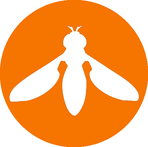Hoverfly Technologies Secures $20M for U.S. Drone Dominance
October 15, 2025, 3:41 pm

Location: United States, Virginia, Arlington
Employees: 5001-10000
Founded date: 1969
Total raised: $45M
Hoverfly Technologies just raised $20 million in Series B funding. This capital infusion accelerates U.S. defense drone manufacturing. Leonardo DRS and Korea Robot Manufacturing are key investors. The move strengthens domestic supply chains. It boosts production of critical tethered drone systems. Hoverfly's Spectre and Sentry platforms are vital. New NEXUS technology expands operational ranges. This investment enhances national security. It solidifies Hoverfly's market leadership. The company drives American drone innovation. This strategic funding round marks a pivotal moment. It supports secure, U.S.-made unmanned capabilities.
Hoverfly Technologies, a leader in tethered drone systems, announced a significant financial milestone. The Sanford, Florida-based company closed a $20 million Series B funding round. This marks its largest capital raise to date. The investment reinforces Hoverfly’s position in the defense and security sectors. It fuels expansion of critical U.S. drone capabilities.
Existing investor Leonardo DRS spearheaded the round with a $15 million contribution. New partner Korea Robot Manufacturing (KRM) added $5 million. This strategic investment combines financial backing with manufacturing expertise. It targets enhanced production and supply chain resilience.
Hoverfly designs and supplies advanced tethered drone systems. These platforms serve defense and security applications worldwide. Its flagship products, Sentry and Spectre, offer persistent aerial surveillance. They extend network capabilities. These systems provide crucial intelligence, surveillance, and reconnaissance (ISR) support.
The partnership with Leonardo DRS will significantly boost manufacturing capacity. A new agreement expands production of the Hoverfly Sentry system. It also initiates a dedicated production line for the cutting-edge Hoverfly Spectre. This move ensures a robust supply of vital defense technology. Leonardo DRS and KRM will also act as official resellers and integrators for these systems. This expands Hoverfly's global market reach.
Korea Robot Manufacturing's investment is equally transformative. KRM will establish a new U.S. facility. This plant focuses on domestic production of essential drone components. The collaboration strengthens the U.S. defense supply chain. It mitigates reliance on high-risk foreign sources. KRM has secured a stable supply of high-performance materials. This guarantees continuous access to critical inputs for Hoverfly. KRM becomes Hoverfly’s exclusive manufacturer for key components. It will be the preferred vendor for future needs. This strategic alliance supports American manufacturing. It ensures long-term operational stability.
This funding aligns with growing U.S. Department of Defense priorities. There is an increasing focus on secure, American-made unmanned systems. Hoverfly stands at the forefront of this initiative. Its Spectre TeUAS is the only tethered drone on the Defense Innovation Unit’s (DIU) Blue List. This designation signifies trusted U.S.-sourced technology. It offers a reliable alternative to foreign drone manufacturers. This directly supports national security objectives. It addresses concerns about reliance on non-allied technologies.
Hoverfly's innovation extends to new capabilities. The company introduced NEXUS (Network Extension of Unmanned Systems). This technology addresses the demand for comprehensive unmanned ecosystems. It responds to lessons learned from conflicts like the war in Ukraine. The U.S. Army has recognized and adopted NEXUS conceptually. It has demonstrated its capabilities alongside industry partners.
NEXUS transforms Hoverfly systems. They now function as both targeting instruments and command and control hubs. This significantly extends operational ranges Beyond Visual Line-of-Sight (BVLOS). This capability is critical for modern warfare scenarios. It enhances ISR efforts. It supports First-Person View (FPV) operations. It enables effective deployment of loitering drone munitions. NEXUS acts as a combat multiplier. It positions Hoverfly at the vanguard of drone defense technology.
Hoverfly has already made a substantial market impact. The company has sold over 800 tethered drones. These systems serve U.S. and allied defense customers. This strong market traction demonstrates clear mission-critical value. Hoverfly’s technology provides persistent ISR. It delivers precise targeting capabilities. It offers tactical network extension for complex defense operations. The systems meet the rigorous demands of modern military forces.
The KRM partnership also aims for future innovation. It will develop custom, widely adopted, expendable drone components. KRM’s engineering capabilities will deliver cost-effective solutions. These high-performance technologies will directly serve U.S. end-users. This ensures American warfighters receive cutting-edge tools tailored to their operational needs.
This capital injection marks a defining moment for Hoverfly. With backing from world-class partners like Leonardo DRS and KRM, the company is poised for rapid growth. It will scale operations and expand its product offerings. It plans to capture new markets. This solidifies its market leadership. Hoverfly continues delivering systems that advance U.S. drone dominance. The investment secures a future of American technological superiority in unmanned systems. It ensures critical defense infrastructure remains resilient and domestically controlled.
Hoverfly Technologies, a leader in tethered drone systems, announced a significant financial milestone. The Sanford, Florida-based company closed a $20 million Series B funding round. This marks its largest capital raise to date. The investment reinforces Hoverfly’s position in the defense and security sectors. It fuels expansion of critical U.S. drone capabilities.
Existing investor Leonardo DRS spearheaded the round with a $15 million contribution. New partner Korea Robot Manufacturing (KRM) added $5 million. This strategic investment combines financial backing with manufacturing expertise. It targets enhanced production and supply chain resilience.
Hoverfly designs and supplies advanced tethered drone systems. These platforms serve defense and security applications worldwide. Its flagship products, Sentry and Spectre, offer persistent aerial surveillance. They extend network capabilities. These systems provide crucial intelligence, surveillance, and reconnaissance (ISR) support.
The partnership with Leonardo DRS will significantly boost manufacturing capacity. A new agreement expands production of the Hoverfly Sentry system. It also initiates a dedicated production line for the cutting-edge Hoverfly Spectre. This move ensures a robust supply of vital defense technology. Leonardo DRS and KRM will also act as official resellers and integrators for these systems. This expands Hoverfly's global market reach.
Korea Robot Manufacturing's investment is equally transformative. KRM will establish a new U.S. facility. This plant focuses on domestic production of essential drone components. The collaboration strengthens the U.S. defense supply chain. It mitigates reliance on high-risk foreign sources. KRM has secured a stable supply of high-performance materials. This guarantees continuous access to critical inputs for Hoverfly. KRM becomes Hoverfly’s exclusive manufacturer for key components. It will be the preferred vendor for future needs. This strategic alliance supports American manufacturing. It ensures long-term operational stability.
This funding aligns with growing U.S. Department of Defense priorities. There is an increasing focus on secure, American-made unmanned systems. Hoverfly stands at the forefront of this initiative. Its Spectre TeUAS is the only tethered drone on the Defense Innovation Unit’s (DIU) Blue List. This designation signifies trusted U.S.-sourced technology. It offers a reliable alternative to foreign drone manufacturers. This directly supports national security objectives. It addresses concerns about reliance on non-allied technologies.
Hoverfly's innovation extends to new capabilities. The company introduced NEXUS (Network Extension of Unmanned Systems). This technology addresses the demand for comprehensive unmanned ecosystems. It responds to lessons learned from conflicts like the war in Ukraine. The U.S. Army has recognized and adopted NEXUS conceptually. It has demonstrated its capabilities alongside industry partners.
NEXUS transforms Hoverfly systems. They now function as both targeting instruments and command and control hubs. This significantly extends operational ranges Beyond Visual Line-of-Sight (BVLOS). This capability is critical for modern warfare scenarios. It enhances ISR efforts. It supports First-Person View (FPV) operations. It enables effective deployment of loitering drone munitions. NEXUS acts as a combat multiplier. It positions Hoverfly at the vanguard of drone defense technology.
Hoverfly has already made a substantial market impact. The company has sold over 800 tethered drones. These systems serve U.S. and allied defense customers. This strong market traction demonstrates clear mission-critical value. Hoverfly’s technology provides persistent ISR. It delivers precise targeting capabilities. It offers tactical network extension for complex defense operations. The systems meet the rigorous demands of modern military forces.
The KRM partnership also aims for future innovation. It will develop custom, widely adopted, expendable drone components. KRM’s engineering capabilities will deliver cost-effective solutions. These high-performance technologies will directly serve U.S. end-users. This ensures American warfighters receive cutting-edge tools tailored to their operational needs.
This capital injection marks a defining moment for Hoverfly. With backing from world-class partners like Leonardo DRS and KRM, the company is poised for rapid growth. It will scale operations and expand its product offerings. It plans to capture new markets. This solidifies its market leadership. Hoverfly continues delivering systems that advance U.S. drone dominance. The investment secures a future of American technological superiority in unmanned systems. It ensures critical defense infrastructure remains resilient and domestically controlled.
